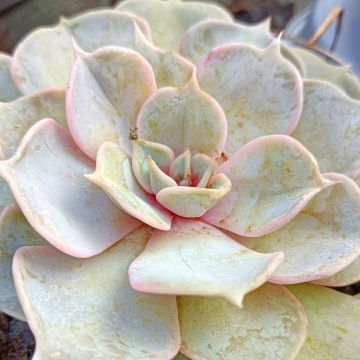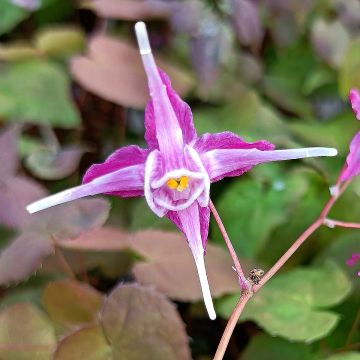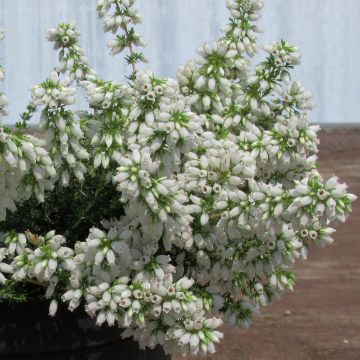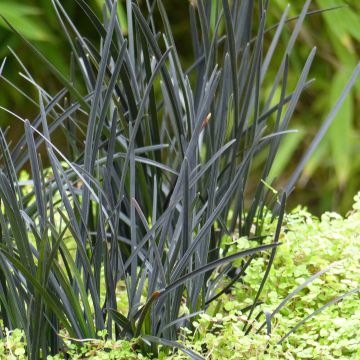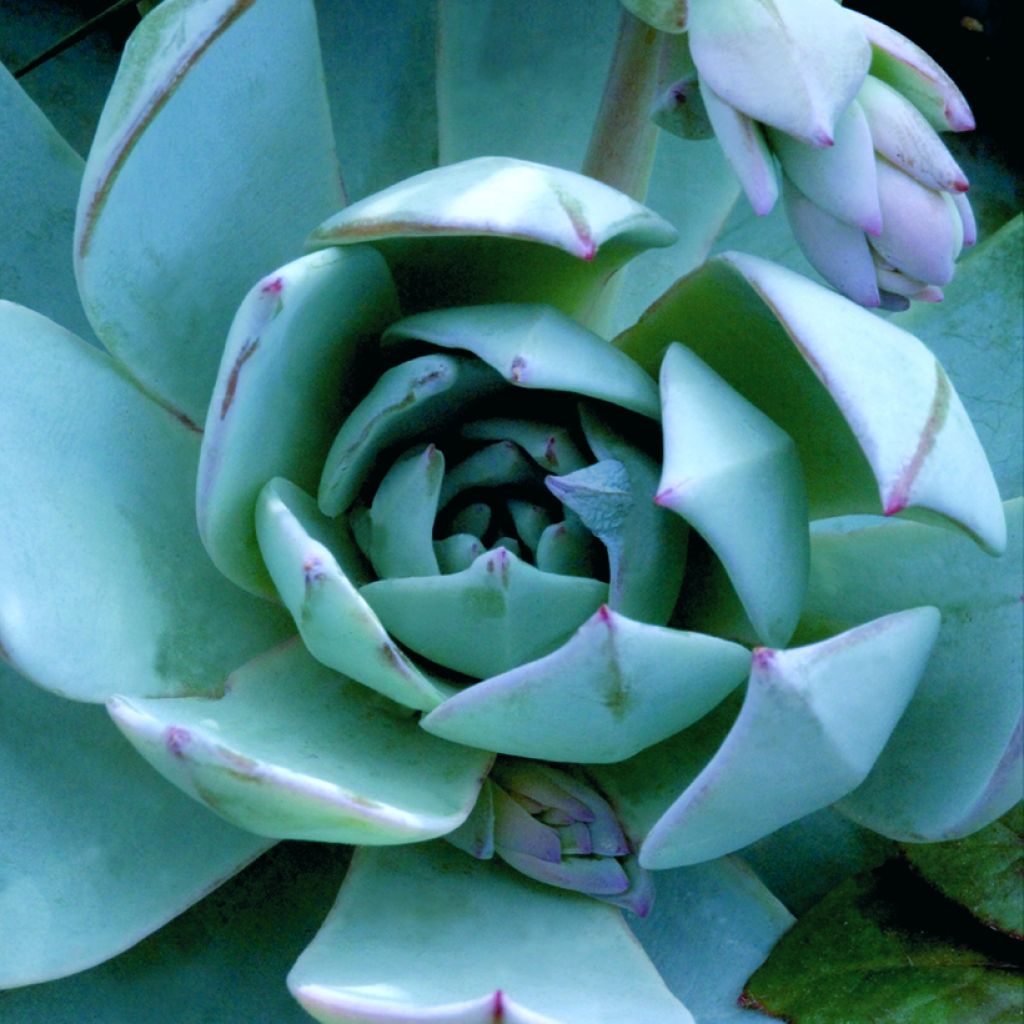

Echeveria peacockii Urban Orange seeds
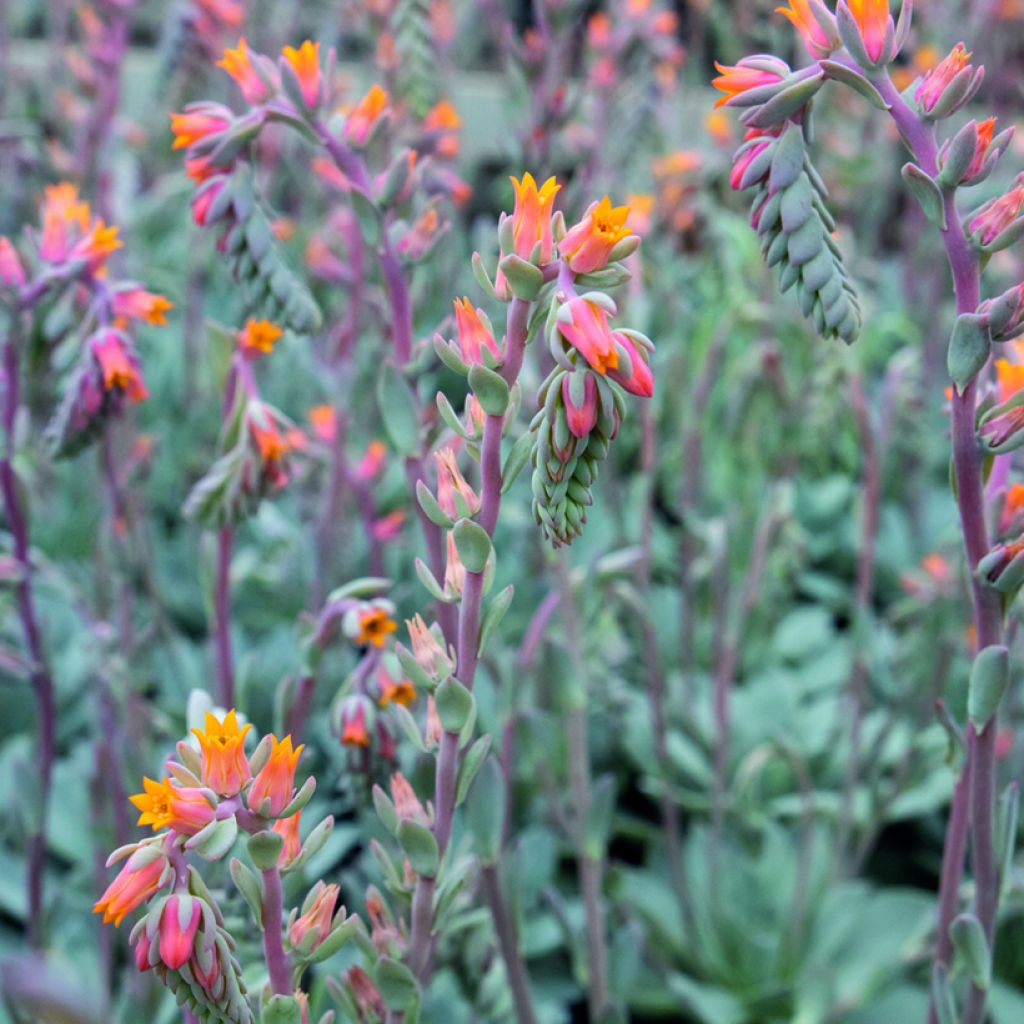

Echeveria peacockii Urban Orange seeds
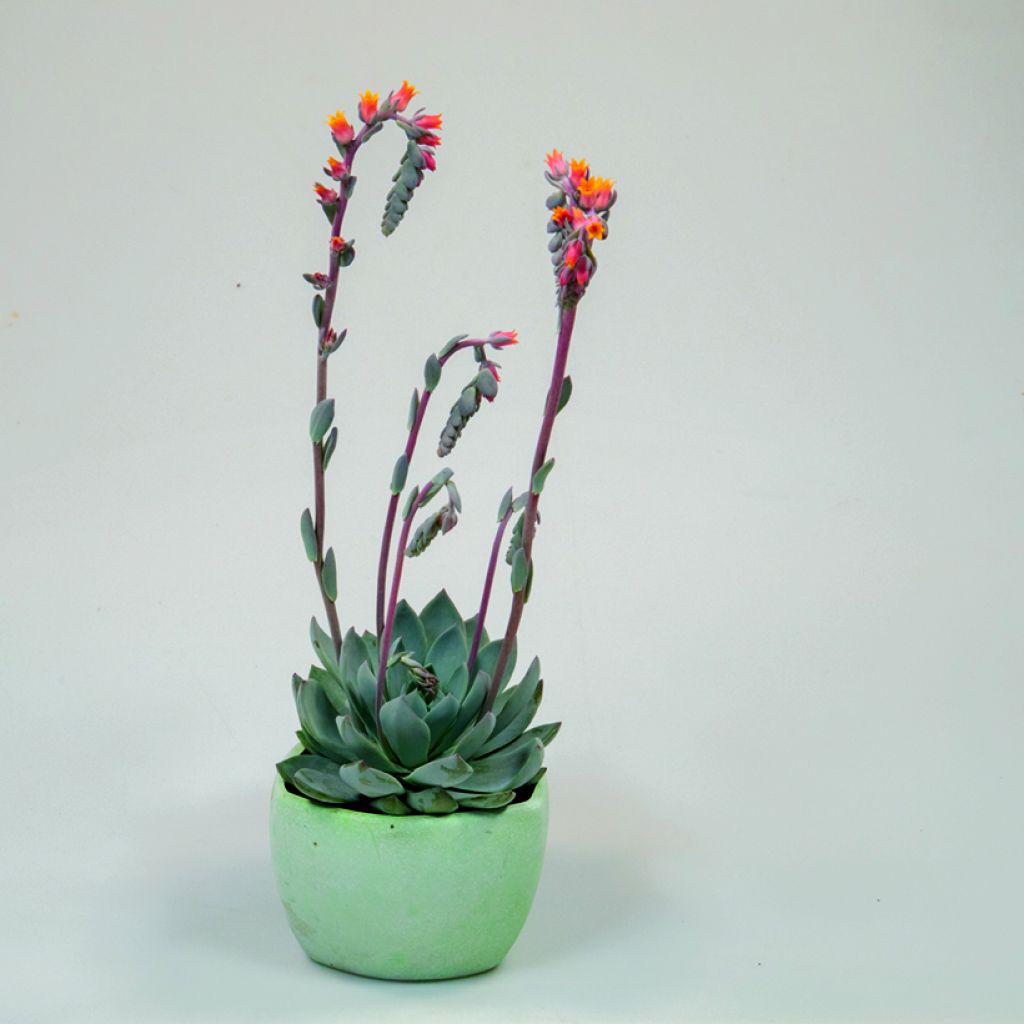

Echeveria peacockii Urban Orange seeds
Echeveria peacockii Urban Orange seeds
Echeveria peacockii Urban Orange
This item cannot be shipped to the selected country
Dispatch by letter from €3.90
More information
Schedule delivery date,
and select date in basket
This plant carries a 6 months recovery warranty
More information
We guarantee the quality of our plants for a full growing cycle, and will replace at our expense any plant that fails to recover under normal climatic and planting conditions.
Seed-only orders are dispatched by sealed envelope. The delivery charge for seed-only orders is €3.90.
Does this plant fit my garden?
Set up your Plantfit profile →
Description
Echeveria peacockii 'Urban Orange' is a small fleshy succulent plant that is frost-tender. It forms glaucous, blue-grey leaf rosettes, possibly tinged with red at the tips in full sun. In summer, it adorns itself with an orange flowering, attracting a multitude of insects. It is used to create sculptural and easy-to-maintain pots indoors or on the terrace and balcony. it is drought-resistant and requires little watering and maintenance.
Echeverias are perennial succulents belonging to the Crassulaceae family. These plants are famous for their very decorative leaf rosettes reminiscent of artichokes. Originating from dry and rocky areas in central Mexico, the Echeveria genus is particularly sensitive to excess water. These plants require well-drained, gravelly soil and a very bright exposure. Highly drought-resistant, Echeveria still appreciates some watering in summer. Echeveria peacockii species cannot tolerate frost and begin to suffer as soon as the temperature drops below 6°C. It is best cultivated in a pot that can be stored indoors, protected from frost, from early autumn. Echeveria peacockii 'Urban Orange' forms a rosette of fleshy, widely flattened, spatulate leaves, covered with a bloom that gives it a bluish-grey glaucous hue. The rosette measures about 8 cm in all directions. Growing rather slowly, it can spread over 40-50 cm on the ground, through the production of stolons. New rosettes form at the end of these stolons. Flowering occurs in June-July, depending on the growing conditions. It takes the form of small bright yellow bell-shaped flowers, carried on 15 cm arched stems that arise at the axils of the leaves.
Plant Echeveria peacockii 'Urban Orange' in an attractive, shallow pot. It delights collectors of cacti and other succulent plants. You can also create a desert-like mini-garden in the house, on the terrace or balcony, mixing Echeverias with Aloes, small agaves, dwarf opuntias, or houseleeks, for example.
Report an error about the product description
Echeveria peacockii Urban Orange seeds in pictures




Flowering
Foliage
Plant habit
Botanical data
Echeveria
peacockii
Urban Orange
Crassulaceae
Cultivar or hybrid
Other Echeveria
Planting and care
Sow 'Echeveria peacockii 'Urban Orange' from February to April in a seed tray. Use good quality soil, sifted on the surface to bind the seed to its substrate. Before sowing, lightly press down the soil with a board. Sow your seeds by broadcasting them. Cover the seeds by sprinkling soil on top or vermiculite, lightly press down and water lightly. Place your seed tray in light, without direct sunlight, at a temperature of 21°C to 25°C. Lower the temperature at night to 18°C to create a beneficial germination cycle.
Seed germination will take 10 to 18 days. As soon as the plants are manageable, transplant them into 7 cm pots. Keep the soil moist, but not overly wet during growth.
Choose a well-lit location indoors or a sunny spot outdoors. Add some compost and a little gravel or coarse sand to improve drainage.
Cultivate at a temperature of 18-25°C during the day and 15-18°C at night. Cooler temperatures at night are better for leaf colour. In winter, indoor temperature should be between 15 and 18°C. Temperatures below 15°C lead to leaf deformation. Echeveria does not tolerate frost.
Sowing period
Intended location
This item has not been reviewed yet - be the first to leave a review about it.
Evergreen perennials
Haven't found what you were looking for?
Hardiness is the lowest winter temperature a plant can endure without suffering serious damage or even dying. However, hardiness is affected by location (a sheltered area, such as a patio), protection (winter cover) and soil type (hardiness is improved by well-drained soil).

Photo Sharing Terms & Conditions
In order to encourage gardeners to interact and share their experiences, Promesse de fleurs offers various media enabling content to be uploaded onto its Site - in particular via the ‘Photo sharing’ module.
The User agrees to refrain from:
- Posting any content that is illegal, prejudicial, insulting, racist, inciteful to hatred, revisionist, contrary to public decency, that infringes on privacy or on the privacy rights of third parties, in particular the publicity rights of persons and goods, intellectual property rights, or the right to privacy.
- Submitting content on behalf of a third party;
- Impersonate the identity of a third party and/or publish any personal information about a third party;
In general, the User undertakes to refrain from any unethical behaviour.
All Content (in particular text, comments, files, images, photos, videos, creative works, etc.), which may be subject to property or intellectual property rights, image or other private rights, shall remain the property of the User, subject to the limited rights granted by the terms of the licence granted by Promesse de fleurs as stated below. Users are at liberty to publish or not to publish such Content on the Site, notably via the ‘Photo Sharing’ facility, and accept that this Content shall be made public and freely accessible, notably on the Internet.
Users further acknowledge, undertake to have ,and guarantee that they hold all necessary rights and permissions to publish such material on the Site, in particular with regard to the legislation in force pertaining to any privacy, property, intellectual property, image, or contractual rights, or rights of any other nature. By publishing such Content on the Site, Users acknowledge accepting full liability as publishers of the Content within the meaning of the law, and grant Promesse de fleurs, free of charge, an inclusive, worldwide licence for the said Content for the entire duration of its publication, including all reproduction, representation, up/downloading, displaying, performing, transmission, and storage rights.
Users also grant permission for their name to be linked to the Content and accept that this link may not always be made available.
By engaging in posting material, Users consent to their Content becoming automatically accessible on the Internet, in particular on other sites and/or blogs and/or web pages of the Promesse de fleurs site, including in particular social pages and the Promesse de fleurs catalogue.
Users may secure the removal of entrusted content free of charge by issuing a simple request via our contact form.
The flowering period indicated on our website applies to countries and regions located in USDA zone 8 (France, the United Kingdom, Ireland, the Netherlands, etc.)
It will vary according to where you live:
- In zones 9 to 10 (Italy, Spain, Greece, etc.), flowering will occur about 2 to 4 weeks earlier.
- In zones 6 to 7 (Germany, Poland, Slovenia, and lower mountainous regions), flowering will be delayed by 2 to 3 weeks.
- In zone 5 (Central Europe, Scandinavia), blooming will be delayed by 3 to 5 weeks.
In temperate climates, pruning of spring-flowering shrubs (forsythia, spireas, etc.) should be done just after flowering.
Pruning of summer-flowering shrubs (Indian Lilac, Perovskia, etc.) can be done in winter or spring.
In cold regions as well as with frost-sensitive plants, avoid pruning too early when severe frosts may still occur.
The planting period indicated on our website applies to countries and regions located in USDA zone 8 (France, United Kingdom, Ireland, Netherlands).
It will vary according to where you live:
- In Mediterranean zones (Marseille, Madrid, Milan, etc.), autumn and winter are the best planting periods.
- In continental zones (Strasbourg, Munich, Vienna, etc.), delay planting by 2 to 3 weeks in spring and bring it forward by 2 to 4 weeks in autumn.
- In mountainous regions (the Alps, Pyrenees, Carpathians, etc.), it is best to plant in late spring (May-June) or late summer (August-September).
The harvesting period indicated on our website applies to countries and regions in USDA zone 8 (France, England, Ireland, the Netherlands).
In colder areas (Scandinavia, Poland, Austria...) fruit and vegetable harvests are likely to be delayed by 3-4 weeks.
In warmer areas (Italy, Spain, Greece, etc.), harvesting will probably take place earlier, depending on weather conditions.
The sowing periods indicated on our website apply to countries and regions within USDA Zone 8 (France, UK, Ireland, Netherlands).
In colder areas (Scandinavia, Poland, Austria...), delay any outdoor sowing by 3-4 weeks, or sow under glass.
In warmer climes (Italy, Spain, Greece, etc.), bring outdoor sowing forward by a few weeks.





































